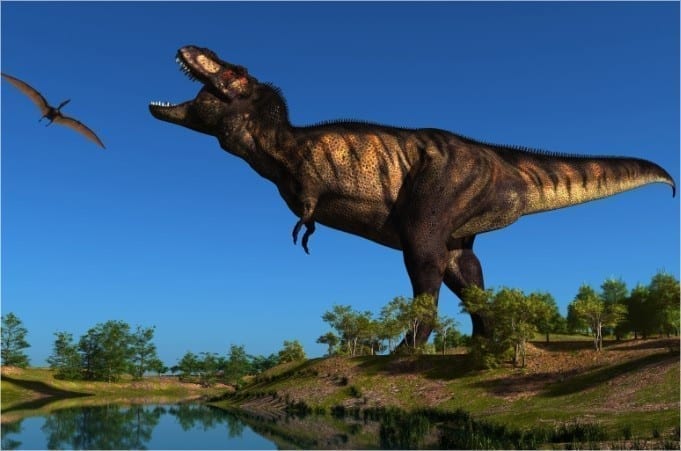
A team of researchers from the University of Bonn in Germany took a number of fossilized eggs that, according to scientists who believe in evolutionary theory, were dated to a period about 68 million years ago. To find out what was the original color of the eggs, the researchers used a chemical separation technique to isolate the original pigments of the eggshells. Their discovery of two specific pigments named protoporphyrin and biliverdin led the researchers to the conclusion that the eggs were colored blue-dark green, similar to the color of emu eggs.
This discovery marks the first time that researchers have found pigments in dinosaur eggs, and it casts in serious doubt the assumption that dinosaurs roamed the earth tens of millions of years ago. Pigment molecules are complex: the pigments found in the eggshells contained chemical pentagonal structures shaped like a ring that were bound together. These rings contain carbon and nitrogen and can not survive forever. The chemical energy stored in the pigments are vulnerable to a variety of chemical reactions that break the pigment molecules into simpler molecules. How is it possible, then, for these pigments to have survived for tens of millions of years?
The answer is, of course, that there is no chance that the pigments survived that long. Even if we assume — as some scientists are trying to suggest — that the process of fossilization locked the pigments within mineral walls that somehow survived millions of years of floods, earthquakes, erosion, climate change and more — complex molecules such as pigments should have broken down on their own. This is ensconced in the second Law of Thermodynamics, the Law of Entropy: any organized system becomes, spontaneously and over time, a disorganized system. Entropy is a never-ending process that also works on buried or frozen molecules. There is no process known to mankind that doesn’t obey this law, especially not when it concerns complex molecules which break down into simpler molecules.
Scientists have yet to try to learn at what pace pigments break down — but they have measured how fast other bio-chemicals break down. Until now, the results of experiments limit their lifespan to less than a million years. If biochemicals can not survive over a million years without disintegration, how could dinosaur egg pigments survive tens of millions of years? The only explanation why fossilized dinosaur egg shell pigments remained intact is that the world is much younger — a total of several thousand years, as Judaism teaches.
